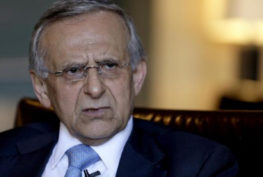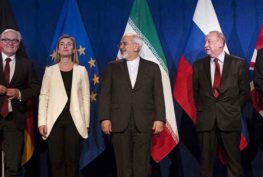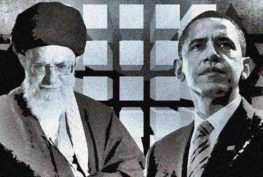A third wave of geopolitics has been making its way into the Middle Eastern political geography since the end of the Cold War. The first wave began with the collapse of the Ottoman Empire following World War I. The second wave trailed World War II, when the European colonial order collapsed. The third wave will reach its fullest extent when the American order in the Middle East fades and is replaced by sustained regional disorder. The contemporary Middle East is the product of these three geopolitical waves. Among the humiliating consequences of these waves is the rise of the extremist group calling itself the Islamic State.
Geopolitics is the intersection of geography, power, and foreign policy, and it often focuses on the states, peoples, borders, resources, environments, trade routes, and human traffic. In the transition to a new geopolitics, these factors become gradually reconfigured and they assume floating realities, differing directions, and varying significance. The key features of the emergent third wave of Middle East geopolitics are failed states, humiliated peoples, crippled economies, extreme inequality and poverty, devastated environments, plundered resources, conflicted geographies, foreign intrusions, and violent radicalism.
The fertile Middle East territory was where the ancient urban civilizations developed, making the region a crossroads of Europe, Africa and Asia for many centuries. As such, the region has been an intersection for people, trade and ideas as well as numerous progressive developments and destructive conflicts. It was this bridging capability that made the region home to many powerful states including Persian, Arab, and Ottoman empires. That same quality of the Middle East is also at the heart of making the region home to world’s three major religions and a harbinger of many scientific discoveries.
Significantly, the resource-rich and historic Middle East has also been a territory very attractive to outside powers, including Europeans, Russians, and Americans. Colonial Europe, Imperial Russia, and capitalist America have at various times and with varying degrees of success dominated the region. Their rivalries, a so-called Great Game, has left lasting and, more often than not, devastating impact on the Middle Eastern states and politics, peoples, environments, resources, and economies. No less responsible for the plight of the Middle Eastern people have been their authoritarian rulers, who have often been stooges of foreign powers.
Ottomans and Colonialists
The first wave of Middle East geopolitics was triggered almost one hundred years ago with the defeat of the Ottoman Empire in World War I by European colonial powers including Great Britain, France and Italy. The Ottoman Islamic Empire, the last global power built by Muslims, had become increasingly fragile and oppressive toward its “Arab subjects” near the end of its long reign. The Arab Muslims, seeking liberation from their Muslim oppressor, did not care to defend it against the “infidel” European forces, who claimed to support justice, freedom, and liberation.
However, none of the promised ideas arrived in the region with the coming of the European powers, which colonized and mistreated the Arab Muslims even worse than their Ottoman overlords had ever done. The Arab Muslims were now humiliated by the non-Muslims and their lives became increasingly miserable as their local orders were dismantled, traditional economies destroyed, cultures demonized, resources plundered and politics corrupted. The Muslims were now for the first time in their history “subjects” of the domineering European powers.
If WWI ended the Ottoman-dominated geopolitics and led to the utter humiliation of the Arabs and Muslims, WWII led to the collapse of European colonial dominance. However, before giving “independence” to their Muslim colonies, the European powers fought bloody wars against local “liberation movements” and then created artificial and conflicting “nation states” from the former colonies to be ruled by local dictators whom the Europeans had nurtured. This transition from colonialism to neocolonialism would serve both local rulers and foreign powers.
Thus, on the basis of the Sykes-Picot map of 1916, the Middle East and North Africa (MENA) was chopped into several small states with phony borders and heterogeneous geographies and cultures. These new states would isolate families, divide ethnic groups and religious sects, and redraw the map of natural resources such as important waterways. The invented border configurations, largely straight lines, had no historical basis or even geographic logic. Its only logic was political: plant the seed of future conflicts and thereby “divide and rule.”
The European powers then placed these artificial states under their neocolonial domination and further isolated them territorially and culturally. They also began a top-down “nation-building” that continues to cripple citizenship and civil-society development in the region. This European approach to forming the new nations, all but guaranteed that the MENA region would become and remain a conflict-ridden territory. The inter-state, inter-ethnic, and inter-sectarian fights today are direct products of the European policy of divide and rule as well as their top-down nation‑building strategy.
The European colonial order in the Middle East began to crack right from the beginning, as it found itself in the midst of chaos, ignorance and poverty. However, it took WWII to make the region unmanageable for the colonialists in the face of the Arab reassertion and liberation movements. As Europeans began to gradually withdraw from the region, the United States and the former Soviet Union began to fill the vacuum. The post-war Middle East then became embroiled in the Cold War between the two emergent superpowers of the capitalist and socialist camps.
The second wave of geopolitics then emerged. The Cold War divided the new Middle Eastern nations along an East-West line, oil emerged as the most significant source of world energy, and the local economies became slowly dependent on oil rent. Yet, the most significant regional development was the formation of the State of Israel and the first major war that ensued in 1948. The United States then assumed the custody of oil, Israel and the “moderate” Arab states, as the USSR buttressed the populist and nationalist forces in the region. This was the first manifestation of ideology‑centered geopolitics in the Middle East.
In this bipolar world, oil rent became an additional curse for Muslims, as it led to extreme class divides between a minority super-rich and a majority super-poor, with a small but growing middle class besieged in between. Oil also led to large military and luxury purchases, uneven urbanization and environmental wastes, and growing dictatorship and corruption of the dependent and largely weak states. Meanwhile, the Arab‑Israeli conflict exacerbated external interventions and local distresses caused by war destructions and human displacements.
Under this condition, the Arab and Muslim reassertion took the form of several nationalist and populist coups, and a struggle against Israel. However, these movements failed to evict the imperial powers, defeat Israel, and deliver the promise of justice, freedom and independence sought by the growing middle class and its allies within the working people. The loss of wars and lands to the new Jewish state was particularly damaging and it became a new source of frustration, anger, and ultimately humiliation. In the face of defeat and despair, a culture of victimization also emerged in the Arab World.
Meanwhile, Orientalism was promoted in policy circles, academia and media of the West, leading to exaggeration and distortion of differences between Arab peoples and cultures and those of the West. Specifically, Arabs and Islam were viewed as “exotic, backward, uncivilized, and at times dangerous.” This racism and stereotyping went so far as to claim that there was a given “Arab mind” that is set on rejectionism, fundamentalism, and terrorism. This cultural demonization complemented the economic and political humiliation.
Worse, Arabs and Muslims were also humiliated by their own corrupt, inapt or ignorant rulers—dictators and populists alike. These rulers, many of whom had been nurtured and supported by outside powers, made the national state into their private property, extended their rule to life-long terms, and limited elite circulation to their immediate families, ruling allies and stooges. They created oligarchic economies, mismanaged the country, and corrupted the public budget and wealth.
The Middle Eastern rulers also destroyed the nationalist, reformist and socialist oppositions. However, they did not succeed in eliminating their Islamic opponents. It is no wonder that when cracks began developing in the dictatorships beginning in the late 1970s, only Islamists could quickly emerge and assume leadership. From Afghanistan to Iran, Turkey and the Arab World, these Islamic forces became radicalized and mobilized (jihadist), setting the stage for the third wave of regional geopolitics.
The Islamic Refuge
Radicalization of the Islamists was quite uneven across the Muslim geographies. Generally speaking, where a pre-Islamic civilization existed, such as in Iran, Turkey and Egypt, extremism was contained, as the humiliated Muslims sought glory in their far pasts. However, this was not the case with most Arab Muslims, who had no such pre-Islamic civilization. They could only take refuge in the Islamic culture to counter their humiliation. This search for glory in the early Islam led to their extremism or reactive politics.
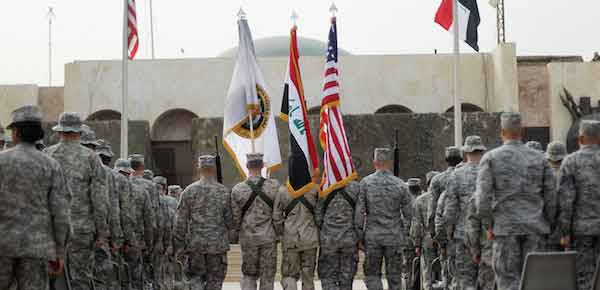
Indeed, the Islamist and terrorist groups in the Middle East and beyond are the product of this sense of humiliation as well as the belief that Islam is the remedy against illegitimate “sovereign” dictators. It is no wonder that the so-called jihadists like the Islamic State (commonly known as the Islamic State in Iraq and Syria, or ISIS) have primarily targeted the local authorities and Western powers, the perpetrators of their humiliation, and seek a borderless Islamic state. Clearly, they are religious but their prime motivation seems essentially political—about territory, resources, trade routes and human traffic, as well as dignity, identity, independence and self-preservation.
While this distinction between the religious and political nature of the ongoing conflict in the Middle East is largely true, the so-called jihadists are certainly using Islam to justify their cause. However, they are using the religion to advance their political cause rather than the other way around. After all, Islam is what gives the jihadists their identity as a distinct imagined community with an imagined glorious past. Nonetheless, this identity politics should not make one to view the struggle by ISIS as Islamic but rather as political, aimed at reversing demonization and humiliation and regaining the dreamed past.
It’s only unfortunate that a minority of Muslims should use their religion to justify political violence. It is even more regrettable that the Western audience should often conflate Islam, Muslims, and Islamic nations. Islam is a faith that has evolved over time into a diverse and complex body of knowledge, incorporating the original doctrine, the subsequent interpretations, and the manner it has been practiced. However, the West often judges Islam by its practical manifestations; in truth, extremism is not a Muslim phenomenon, and is only circuitously related to Islam and Muslim lands.
There are also various schools of thought, orientations, and sects in Islam, each holding differing views of what the religion teaches or demands in practice. The gulf between these orientations is often wider than the divide between Islam and, say, Christianity. Thus, it is inaccurate to consider “Muslims” as a monolithic community. The Muslim nations are equally diverse with the largely desert Arab world adhering to a more traditional Islam than the coastal Asian nations. Besides, there also people of other religious persuasions in the Muslim World.
Thus, there is not one Islam, one kind of Muslim, one homogeneous Islamic world. This is not to say that there are no common values and creed as well as history and heritage that bonds Islam, Muslims and the Islamic world together. There certainly are. For example, we can indeed speak of an Islamic civilization. However, what distinguishes the various constituent elements of this civilization is no less significant than what is shared among them. In fact, the defining characteristic of the present day Muslim world is its diversity of outlook, purpose and interests.
The Way Forward
ISIS is a unique Islamic political force with a political goal centered on recreating an imagined glorious Islamic past that would supposedly dispel the demonization and humiliation that Muslims have suffered in the hands of the foreign powers and local dictators. Thus, the conflict ISIS represents is multi-causal, including ideological vows, historical nostalgias, structural detriments, and psychological outrages, and as such, it has no military solution. As long as its root cause remains, the kind of movements like ISIS will rise up from their ashes. The same is true of Al-Qaeda after the killing of Osama Bin Laden. These are cause-driven movements, rather than symptom‑driven ones.
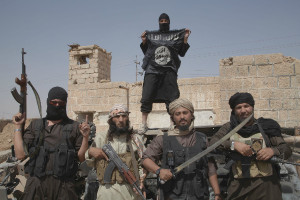
Meanwhile, the impending demise of American power in the region can only encourage the spread of Islamic extremism. Worse yet, no current power is willing or able to fill the gap, or even acknowledge the causes of rising extremism and address the correct cures for its resolution. On the contrary, the involved domestic and foreign powers continue with their militaristic and authoritarian policies as demonstrated by the suppression of the Arab Spring and the purely military approach to ISIS. Yet, the Middle East needs benevolent foreign powers, patriotic leaders, democratic politics, and balanced economic development.
If the current trajectory remains, the region will not see peace and stability for a long time. ISIS or its ideological successors will endure, American-Iran relations will not substantially improve, Palestinian-Israeli peace will remain elusive, the Bashar Al-Assad regime will not collapse, Kurds will demand independence in vain, and anti-Western sentiment will further rise. Meanwhile, Iraq, Syria, Yemen, Pakistan and Afghanistan will remain hotspots, and the Persian Gulf Arab states, Turkey, Egypt and Iran will see their inter-state animosity increased and stability eroded. The chaos that is building up in the region can ultimately strangulate all nations.
What is more, a tripartite divide will almost certainly emerge as Iranians, Turks and Arabs seek to revive their past “glorious” identities. Iranians will increasingly turn to their chauvinistic Persianism, Turks to their jingoistic Ottomanism, and Arabs to their intemperate Islamism. This divide will far surpass the existing Shia-Sunni split or the gulf that currently divides extremist and moderate Muslims. Complicating this future state of Middle East geopolitics will be the presence of an adamant Jewish State in their midst and continued imperial rivalry among the foreign powers.
As old conflicts continue and new ones emerge, they will assume troubling dimensions and urgency. For example, intra-state conflicts will increasingly involve the younger generation of the educated middle class against the authoritarian state, relations between the poor and the rich will become more antagonistic, secular and religious forces will hardly co-exist, and intra-religious and intra-ethnic conflicts will intensify. Most current states will fail and they will call on foreign powers to their rescue. This will lead to intensified domestic politics and foreign intervention in the region.
In short, the new geopolitics of the Middle East in its third wave will be characterized by failed states, political chaos and revolt, inter-state conflict, and foreign interventions. In addition, the economies of the region for the most part will be plundered and derelict, its social systems twisted and dehumanized, and its environments ruined and uninhabited as people migrate to safer places. Under these conditions, a condition of despair will prevail and extremist groups and their rivals, struggling against each other for self-preservation, will dot the Middle Eastern geography.
Of course, nothing here is inevitable. The course of these disastrous developments can and must change. To begin with, the causes of this catastrophe must be fully understood and appreciated. Both domestic autocratic rulers and officious foreign powers are responsible. They have for too long worked together or in animosity with each other to suppress demands for political reform, corrupt and ruin the economies, provoke inter-state wars and enmity, and humiliate the beleaguered populations. Ideologies, religion in particular, have also played a harmful role as they have promoted obliviousness and intolerance.
These forces and institutions must be reformed or dismissed by new drivers of change in the region, namely the younger generations. At the global level, foreign powers must reduce negative interferences in favor of positive mediations. Specifically, they must openly advocate political-economic reforms and provide peaceful practical support for nationalist and democratic forces in their struggle against the failed states. This should include rejecting coercive diplomacy in favor of engagement, advancing economic cooperation, and protecting regional environments for a sustainable democratic development.
At the regional level, there must be concrete attempts to correct the failed states or force them into retirement in favor of new democratic leaderships. It is critical that all regional states are made legitimate, strong, and sovereign. The failed states must be quickly changed or reformed as their lingering continuation is the most harmful regional factor. The pre-requisites for moving in this direction are regional and international cooperation on the basis of full recognition of concerns and interests. A key outcome of such an approach must the formation of democratic, stable, and nonbelligerent states.
At the national level, multiple reforms must be instituted from the top and secured by public participation from the bottom. These should include democratizing local politics, developing the economy, leveling income distribution, mitigating poverty, eliminating repressive social restrictions on youth and women, and protecting religious and ethnic minorities. It is imperative that dictatorship, corruption and monopolistic practices are eliminated in favor of democratic rules, transparency, and a free social market system. Without courageous and strategic steps by regional and extra-regional leaders, the future will be bleak for the people and the political elite in the Middle East.
Originally published in The Cairo Review

